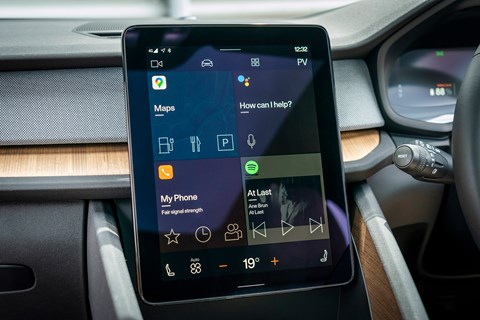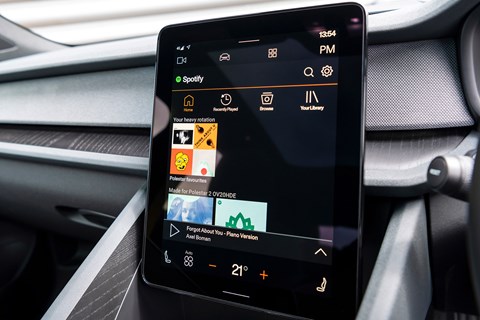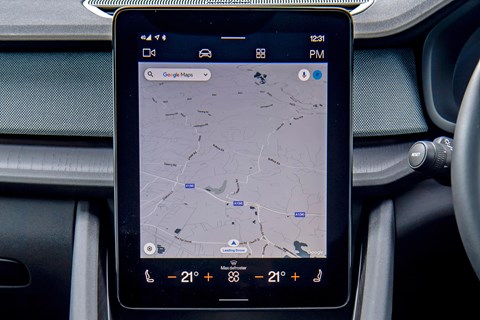► Google’s Android Automotive OS tested
► First car to use it is the Polestar 2
► Does the tech giant’s new system work?
If you’re picking a partner company, choose a huge, successful one. It sounds obvious, but the digital landscape is littered with the carcasses of start-ups trying to beat the likes of Facebook, Amazon and Google at their own game. So you can see why fledgling automotive brand Polestar looked to a Silicon Valley behemoth when it was designing its new infotainment system.
Where better to start than knocking on Google’s door? The new Polestar 2, the Tesla Model 3 rival that’s shipping in right-hand drive right now, is the first production car to premiere the new Android-powered operating system, which controls all the car’s infotainment. Free for three years, it’s a neat way of making a break with parent Volvo’s legacy OS, which has become a familiar sight ever since the XC90 relaunched the line-up back in 2015.
Read our Polestar 2 review
We’ve grown accustomed to that Swedish digital experience, but it’s not a patch on this: Polestar’s new Android OS is like jumping from a Blackberry to an iPhone 11. The clear, uncluttered 11.5-inch portrait touchscreen is the entry point to the car’s digital soul – but you can choose to rely on voice control instead, since Google Assistant is built in; you can ask it anything, from directions to jokes. Google has its fingers in so many digital pies, you can see why Polestar was keen to collaborate.

Most major Google services are integrated: navigation is by Google Maps (one of the best in the business, and it’ll help you find EV charging stations) while if you log in with your Google account, you’ll find your contacts, music preferences and regular journeys port across to the car. But they’ve cleverly allowed other digital ecosystems to coexist alongside Google’s – so your Apple and non-Android devices will sync seamlessly too, and music by Spotify is supported (Apple Music is being worked on).
Where the system falls down is the modest number of apps available in the store. The screen looks quite empty today. Phone as key to unlock and start the car? ‘Coming in 2021.’ Media services so you can watch Netflix or YouTube while parked up? ‘We are focusing on media and messaging categories at first – they’re coming soon,’ head of user experience Aloka Muddukrishna told CAR.
Minimum viable product, developers call it. The Polestar OS is MVP v1.0 – it just so happens that their interpretation of minimum is very high indeed. With over-the-air updates guaranteed for the life of the car, the bar is only going to get higher.
Android Automotive OS: how it works
Connect phwoar
Sync Apple or Android devices wirelessly to the car – and use your Google account to bring your diary/music/favourites with you.

‘Hey Google’
Google Assistant lets you talk to the car. Voice recognition is very good, though not discernibly better than existing Merc systems.
Map happy
Using Google Maps will be second nature to many: pared-back cartography strips out unnecessary info and the nav is brilliant.

Android Automotive: does it work?
Yes. The world’s first use of the Google automotive OS is slick in operation and chimes with Polestar’s modernist, digital values. Its potential is yet to be fully realised, though, like a new shop window with few goodies on display today.
Check out more CAR tech news here